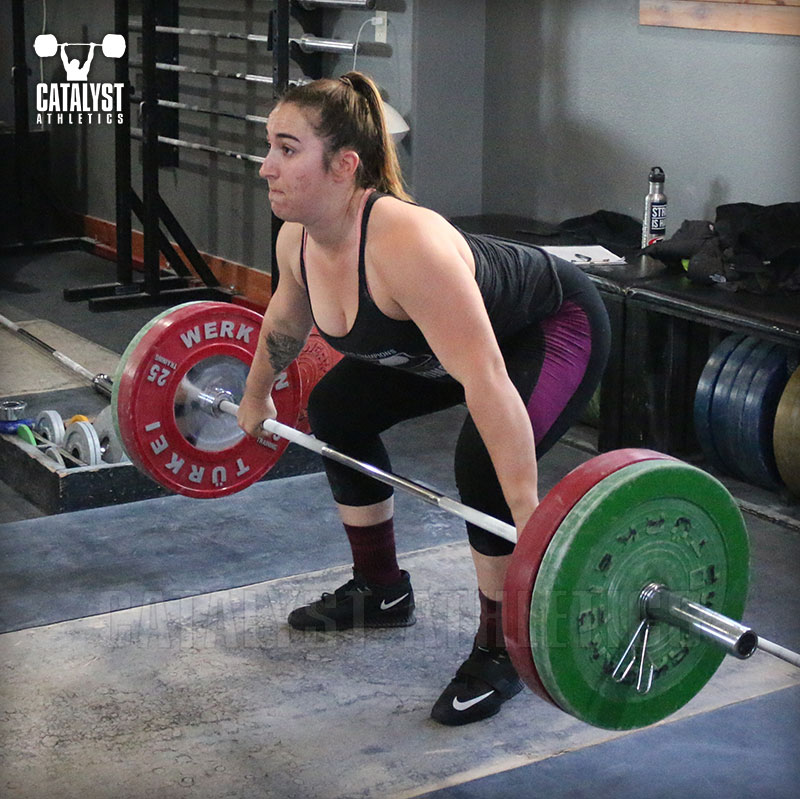Ask Greg: Issue 195

Anonymous: Should your feet distance in the starting position be the same for the snatch and clean?
Greg Says: As a starting point, yes. That is, in principle the positions are the same—the same ideal position that will produce the most acceleration and elevation on the bar in one will do the same in the other.
However, we have to consider other factors. Primarily how a stance affects your ability to set an optimal starting position, including the position of the bar relative to the foot, the position of the shoulders relative to the bar, the balance over the feet, and the extension of the back. If the textbook stance disrupts any of these things, you’re losing more than you’re gaining.
A stance that places the legs approximately vertical when standing allows maximal force transfer into the bar from driving against the ground, and also brings the bar to the highest elevation based on your height. But a wider stance has fairly little detrimental effect on those things, which means that any improvement an adjustment away from this stance provides is very likely to far outweigh the drawbacks.
So ultimately the best stance is the one that allows you to lift the most weight, and finding it will require some experimentation after establishing proficiency with the textbook position.
Greg Says: As a starting point, yes. That is, in principle the positions are the same—the same ideal position that will produce the most acceleration and elevation on the bar in one will do the same in the other.
However, we have to consider other factors. Primarily how a stance affects your ability to set an optimal starting position, including the position of the bar relative to the foot, the position of the shoulders relative to the bar, the balance over the feet, and the extension of the back. If the textbook stance disrupts any of these things, you’re losing more than you’re gaining.
A stance that places the legs approximately vertical when standing allows maximal force transfer into the bar from driving against the ground, and also brings the bar to the highest elevation based on your height. But a wider stance has fairly little detrimental effect on those things, which means that any improvement an adjustment away from this stance provides is very likely to far outweigh the drawbacks.
So ultimately the best stance is the one that allows you to lift the most weight, and finding it will require some experimentation after establishing proficiency with the textbook position.
| Greg Everett is the owner of Catalyst Athletics, publisher of The Performance Menu Journal and author of Olympic Weightlifting: A Complete Guide for Athletes & Coaches, Olympic Weightlifting for Sports, and The Portable Greg Everett, and is the writer, director, producer, editor, etc of the independent documentary American Weightlifting. Follow him on Facebook here. |
Search Articles
Article Categories
Sort by Author
Sort by Issue & Date
Article Categories
Sort by Author
Sort by Issue & Date

